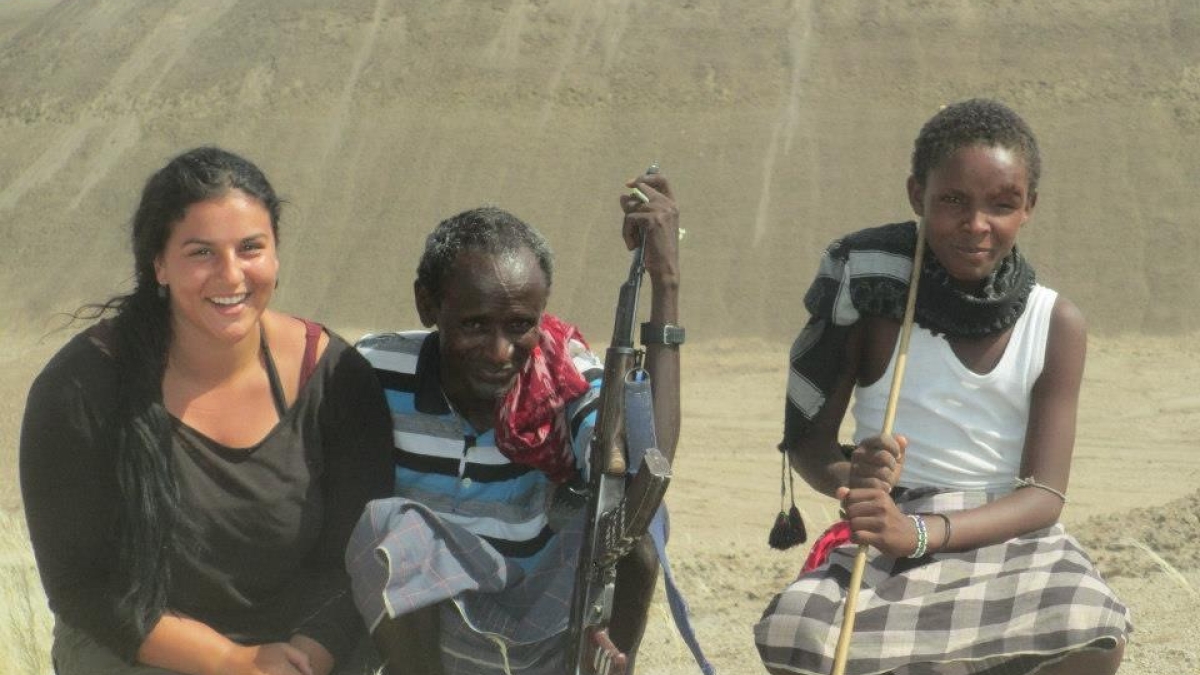From Ethiopia to Illinois: student learns from varied experiences

Editor's Note: This story is part of an ongoing series about student excellence at the university. To read more about some of ASU's outstanding students, click here.
Anthropology major Allie Kollman has conducted field work in the harsh deserts of Ethiopia, studied through an intense program at an Illinois field school and currently works on a research project in an archeological chemistry lab.
“I’m really trying to explore what I want to do. I’m interested in paleoanthropology and bioarcheology. I’m embracing all of the opportunities here, because there are a lot,” she said.
Studying at ASU provides her with opportunities to work with some of the best professors in her field to gain real-world experience.
“It’s hands-on learning and you’re experiencing what you’re going to do in the field, if you choose that career. You know what you are getting into and you also get to know the professors,” she said.
Kollman discovered the wonders of paleoanthropology during a study abroad opportunity at the Hadar site in Ethiopia. It didn’t matter that the group was basically camping out without real bathrooms or showers for six weeks during a journey that was led by William Kimbel, Institute of Human Origins director and School of Human Evolution and Social Change professor in the College of Liberal Arts and Sciences.
“It was amazing. It was honestly one of the best experiences of my life. We were in one of the best paleoanthropology places in the world. We surveyed sites, looked for fossils of the extinct human ancestor called Australopithecus afarensis (Lucy’s species) and helped with a research project on cut marks on bones. We collected more than 1,500 bones that we then analyzed,” she said.
Living among the Afar people, the pastoralist group in the Hadar area, was a “terrific” adventure in experiencing another culture.
“For an anthropologist, to live with the Afar people is remarkable. They accepted us and were the best at finding fossils. I can’t even describe it in words how amazing the experience and the people were,” Kollman said.
Another opportunity at the Kampsville (Ill.) Field School was an intense learning experience where Kollman learned how to identify every bone in the body through fragments, conducted research examining skeletal sexual differences in middle and late woodland populations, and worked with program director and School of Human Evolution and Social Change Regent’s Professor of bioarchaeology Jane Buikstra.
“It’s a very intensive program. It is the best,” she said.
This semester’s adventure consists of working in the archeological chemistry lab analyzing bone and hair samples to determine diet and mobility of an ancient Peruvian population for graduate student Sara Marsteller’s dissertation. Last spring, Kollman worked with the Institute of Human Origins on collections and an online database of fossils and articles.
Kollman is also helping another graduate student quantify cut marks made on fauna so there is a standard that researchers can rely on to accurately deduce if the mark was made from stone tools or animal bites.
“There is a debate about different cut marks in anthropology. We want to make sure that the standard is absolute,” she said.
Future plans for Kollman include exploring additional options and possibly going for her doctoral degree in paleoneurology – the study of brain evolution.
“I don’t know for sure. That’s why I’m taking all of the opportunities I’m given here through internships and research,” she said.
That’s also one of the reasons why she chose to attend ASU. Although she applied to other universities, ASU was a natural choice since both of her parents attended the university and the School of Human Evolution and Social Change is known for its excelling anthropology program. Arizona’s weather is also slightly warmer than her hometown of Fargo, N.D.